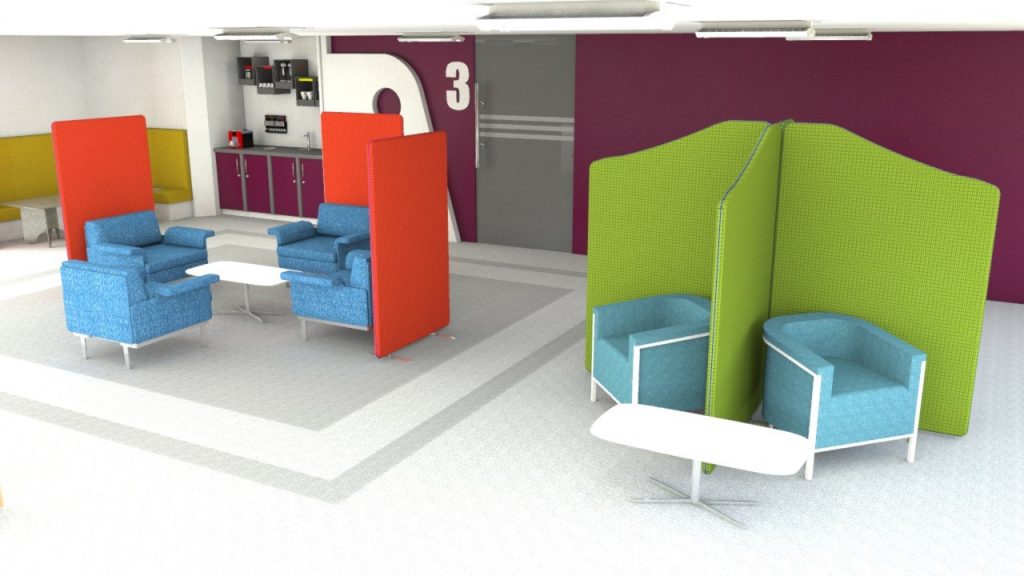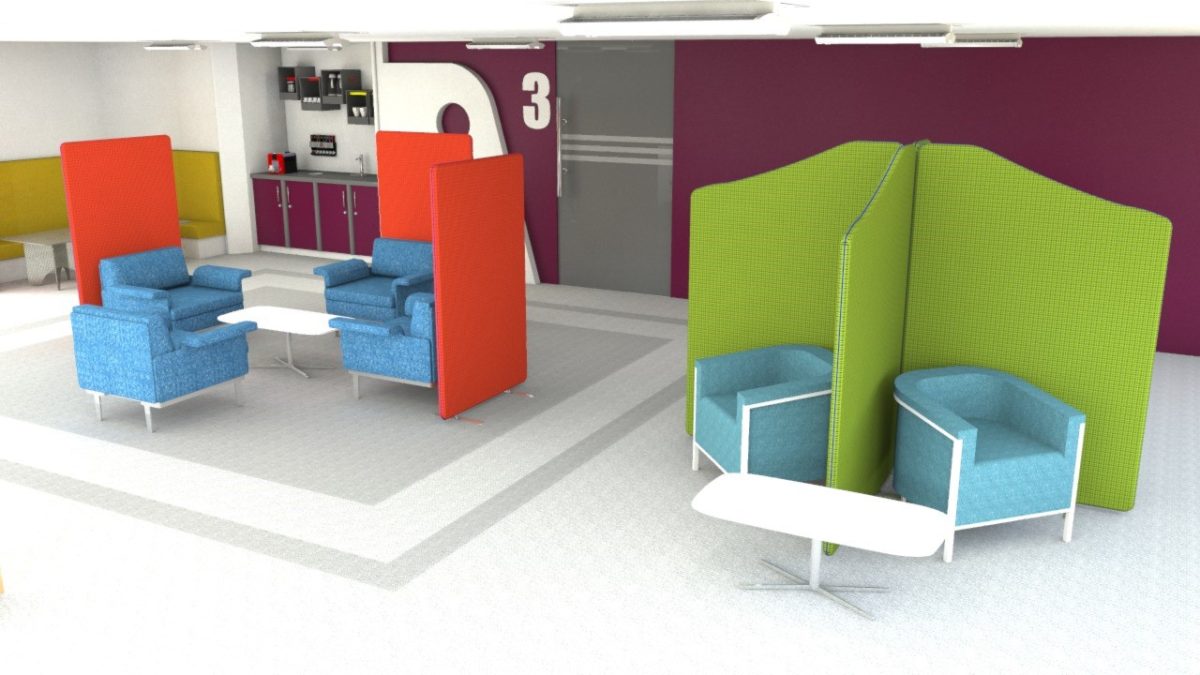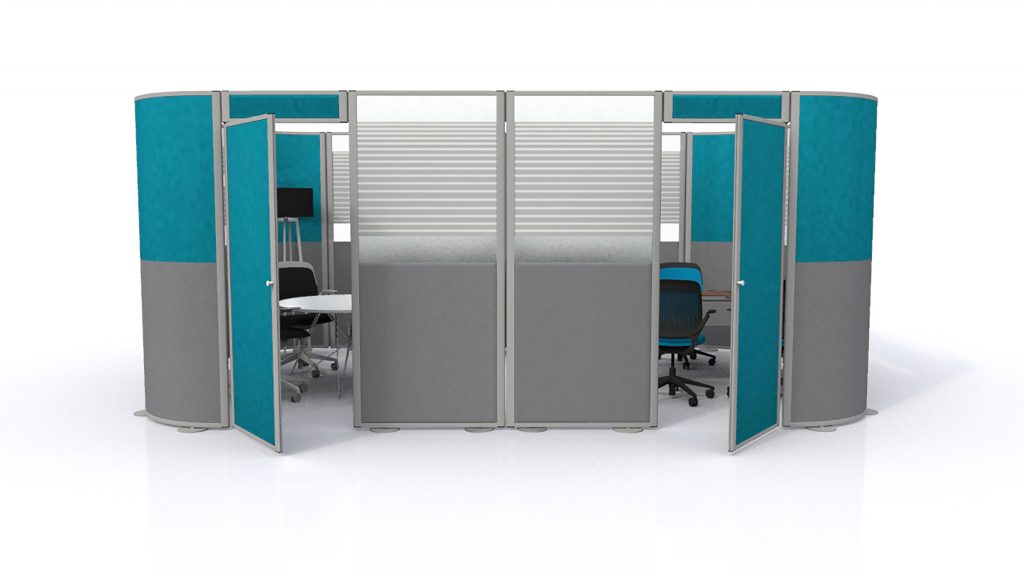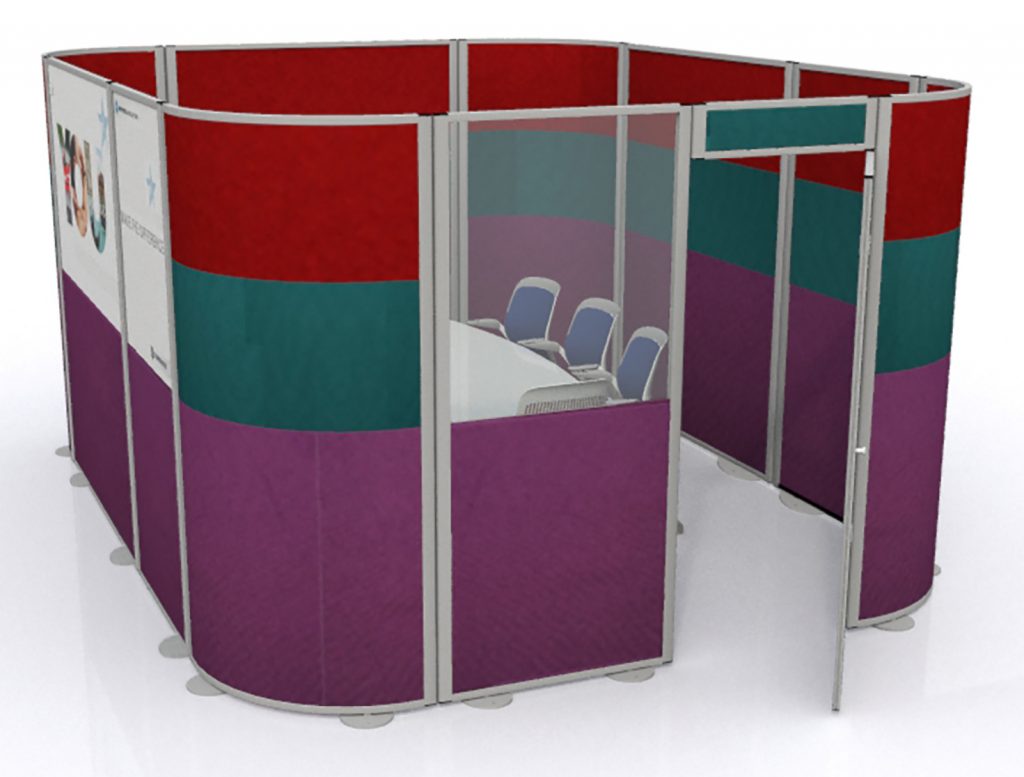The Basics of Office Design
So, you’ve decided your office needs a re-design to bring it up to scratch. Well, the blueprint for what we consider to be a ‘standard office design’ has evolved substantially over the past 10 years, in part due to studies such as this. Aside from installing dedicated gyms, a swimming pool and even a spa if you fancy, this means we are having to innovate to make the office more ‘healthy’. It’s worth noting at this point that a successful office design does not consider just physical issues, but also mental. This means looking past the fancy furniture & stylish meeting spaces. Instead, it’s important to consider the little things which we will be getting onto later.
With the layout of your own office in mind, there are a few factors to keep close throughout the design process. Firstly, your staff. Everyone has their own frustrations with the office, whether it’s a lack of natural sunlight, lack of privacy or just a noisy co-worker. This feedback should be factored in at the start, as the design should be tailored to help make them happy. If the workforce is happy, then theoretically, they should be more productive and even more creative. Of course, quick disclaimer, even the perfect office design will not fix every problem within a business.
Working with the Existing Design of Your Office
Still with me? Good, now let’s start with the framework you have available. Your office; is it big or small? Multiple rooms or just one large ones? Where are the windows located? The latter is very important. Being close to a window or just being exposed to natural light is great for the mood. If you’re sat in a box in the corner of the room, things are going to get dull, fast. If you’re not graced with glass windows wrapping around the room like a New York skyscraper, then don’t worry. Knock down any interior walls which are preventing it seeping into separate corners of the office. If you desire some kind of structure, then Perspex/glass partition screens are the ideal solution.
Now, back to the first questions that were posed; what space is available? This is important as multiple rooms can provide more flexibility. One of the key issues with office work is that we often become trapped at a desk, for 8 hours a day, staring at a screen. This encourages fatigue and is one of the reasons why we start having issues with bad backs. Therefore, consider creating two separate areas; one for collaborative work, where desks are kept in close proximity and another for quiet work where distractions are kept to a minimum.
With this, your staff can move freely (laptops are a key consideration in a design like this) and work in an area which suits the work they are doing as well as the mindset they are in. Should there be space the spare, then an acoustic pod should be a consideration. These can be effective when used as a meeting room or group room.
Creating Balance Within an Office
I’ll expand on this idea of creating separate working areas. This is something which you are likely to pick up on by talking to staff. Some of them will love working side-by-side, bouncing ideas off each other and developing plans. Then there are others, often less vocal, who would rather just stick a pair of headphones on and crack on with the work at hand. Your design should be tailored to the people that work there. If nobody is bothered, then you can get away with keeping desks close together. But if your team likes their personal space and often conduct individual work, then this has to be factored into the layout.
Invest in Furniture for Long Term Gain
Furniture is always the most expensive part of any re-design. Because of this, many companies will choose to shy away from premium products to keep the overall cost down. Appropriately designed seating, partition screens, desks and peripherals are vitally important. This is because they create comfort. Even if employees are sat at a desk for a couple of hours at a time, the strain caused as a result of cheap furniture will create long term problems which could end up costing more than an ergonomic chair. Their modern design is not there to convince you to part with more of your budget. It’s there to make it easier to work and for longer – ideal when you are looking to get the most from your staff.
The Finishing Touches…
By now, you should have a strong idea of how the office is going to be laid out. Once that is set in stone, you can start to think about the interesting part – the decorating. Most modern offices have ditched those monotone colour schemes and dull shades. The reasoning is that people are hardly motivated to work in an environment which makes them feel miserable. Surprisingly, people actually like to work in places which are interesting. Therefore, you should be considering using bright colours where possible. There is nothing wrong with whitewashed walls as long as they are coupled with vibrant partitions and eye-catching furniture.
As a parting point, many indoor design experts would recommend infusing your branding into the design where possible. Whether this is a colour scheme or specific design, keep it consistent. The office should become part of a company’s identity, rather than just the place where people work. This point is crucial, especially if you are hosting guests and visitors as it helps to build your rapport with them.
Hopefully, this little post should provide the basis for you to begin designing your own office. We’ve barely touched upon elements such as the acoustics, which are an important consideration. Re-designing the office often only takes place every 5-10 years, so do your research and make sure the investment helps your business and your brand long term.

Rap Industries have been established for over 40 years. They design and manufacture office screens and partitions bespoke to create effective and attractive working environments. You can find out more about the services they provide by calling 01733 394941 or by sending an e-mail to sales@rapind.com.


